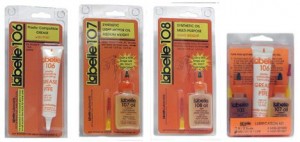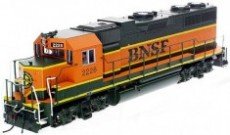Everything on model trains, model railroads, model railways, locomotives, model train layouts, scenery, wiring, DCC and more. Enjoy the world's best hobby... model railroading!
Model Railroad Layout Foundation
Ted would like to hear feedback from others in the hobby on the idea he is working on:
“To make my layout easy to move if required I know that the board has to have tensional strength. Plywood the standard is heavy and too flexible without diagonal bracing which adds even more weight. So I intend to use internal blank doors. They are available in different heights and width. However the primary size would be standard height and 36″ wide. Light and inflexible. Using 3/8″ dowels I can attach then accurately and clamp them using old furniture draw clamps, terminate wire harnesses at the joints as well. Using foam and or cork I can vary the height and it’s easy to attach raised decks.
I am so into this concept I may be blind to negative implications so am looking for comments. Can’t hurt my feelings so be blunt as it will help.”
Click to add your comment to Ted’s posting.
Train Carriage Lighting Using LED lights
Stuart has a question for reader:
“I recently installed carriage lighting using led strips which work perfect until train moves when they flicked which spoils the effect. I use a DCC system, rails are clean and new wheels and pickup have been used. Any idea from your readers on how to overcome this problem, thanks in advance.”
Click the link to add your answer or comment.
Programming a Track for DCC
 DCC or Digital Command Control sends signals to the locomotives through the rails. Multiple locomotives are independently controlled within the same block. Train operation depends on the decoder installed in each block. Programming is done to allow users to set the decoders address.
DCC or Digital Command Control sends signals to the locomotives through the rails. Multiple locomotives are independently controlled within the same block. Train operation depends on the decoder installed in each block. Programming is done to allow users to set the decoders address.
A programming track can be implemented in two ways. Program the track onto your workbench or build it into your layout. The former approach allows simple control and testing facilities. The latter approach incorporates the track into the layout and is easily moveable. It also allows programming a dead zone for track protection. For more information on dcc programming and other model railroading tips and ideas get the Model Train Techniques ebook available free with your first months membership to my online model train club.
How would you describe your overall level of experience in the hobby?
The results of our recent reader poll are in. There were 431 responses to the question: How would you describe your overall level of experience in the hobby?
42% = Average skills (180 Votes)
21% = Reasonably experienced (92 Votes)
18% = Limited skills (76 Votes)
15% = Beginner level (63 Votes)
4% =Very experienced (20 Votes)
Removing Decals from Model Trains
If you are looking to rebuild your railroad model form scratch, then you’ll have to remove decals off the train. Follow the steps below to achieve a neat look.
- Dip a rag into warm water.
- Rub the decal with the damp cloth.
- Remove the decal from the surface using a pair of tweezers.
- Soak a cotton ball into an adhesive remover.
- Use the cotton ball to wipe off any left-over residue.
- Rub the area where the decal was with a wet rag once more to clean up the surface.
Designing a Double-Ended Yard
A double yard has both ends connected to the main track. This is accomplished with a ladder that guides the train onto one of the many tracks in the yard. The components of an ideal yard should include a runaround track, one arriving and one departing track, thoroughfare that connects ladders in a yard, classification tracks and drill track. The following points must be followed.
- Do not block the main line. Limit your turnouts to two to achieve this.
- A runaround track is a must.
- The switch leads of the yard and track must be separate.
- Use a wye track for turnings.
- Do not pack the yard with trains.
Adding Details to Your Model Train
 There are many small details that can be added to model railroads to improve the design. The following ones are ideas for any layout for it to depict a real railroad system.
There are many small details that can be added to model railroads to improve the design. The following ones are ideas for any layout for it to depict a real railroad system.
- Decorate your locomotive with graffiti.
- Using Sobo glue for windows makes them look real.
- Make handrails for F units out of brass wire.
- Spray the windshield with a dull coat to render it the frosted look.
- Weathering is essential for all trains.
- Use rubber from old tires to make wheels.
- Add lights and sound effects.
- Give carriages a dusty and old look.
Track Weathering – How To Create A Realistic Railroad Scene

Track ballast will vary in color depending on its age and usage. If the track has had trains sitting regularly in one spot the ballast might for example have oil stains where the locomotives have been.
Roger P sent in this short article for publication:
Your railroad can showcase track weathering as a result of poorer care on the spurs and sidings. You may find more rust on these sidings which usually is light gray or grayish brown, whereas the mainline will reflect a good condition with dark brown or black in color.
When it comes to track weathering you might find very little ballast on the siding but you’re more likely to find cylinders. The mainline on the other hand will have regular purchased ballast from specific quarries. It is best to use granite or limestone as ballast on the railroad wherever possible. If you could consider these details as you create your prototype you can end up with a very realistic and well crafted railroad.
Click the link to post your comments on Rogers posting.
Model Railroad Waybill System – Should You Operate One?
The sole purpose of real life railway networks is to transport people and goods from place to place but most model trains simply circuit on a loop. If you are a purist, consider adding a model railroad waybill system to your network. A waybill system is used to identify the coach, its transport time and stops. You can use ready-made or custom made waybill systems to operate your railroad network like railroads did in the past before the age of computerization.
Model Train History Dates Back To 1840’s
 Models trains are much older than most people think, with a history dating back to almost two centuries! The first model train, Birmingham Dribbler, was built in 1840s and used a real steam engine to run. These early models were fascinating except for the downside that they were running without any rails!
Models trains are much older than most people think, with a history dating back to almost two centuries! The first model train, Birmingham Dribbler, was built in 1840s and used a real steam engine to run. These early models were fascinating except for the downside that they were running without any rails!
Some people outside the hobby get confused between model railways and miniature railways. Although the principle is the same, they are completely different in that the latter can actually carry real humans and are powered by powerful engines. So if you get asked the difference, then that is the simple answer.
Model Train Gradients
Damien kindly sent in this tip:
Years ago my father explained to me the advantages of building a grid vs. flat layout when it comes to grades. The grid layout offers both + and – grades. What is advantageous here is that if your trains have bridge or other types of over crossings, then the grade angles can be cut in half. The over crossing could be a +1.5%, where as the under crossing could at – 1.5%. Effectively this equates to a 3% grade on a flat top layout. The distances leading up to and going away from the crossing is now a shorter distance for both the over and under crossing tracks.
This works really well as the gauges go up in size. Just think of O gauges crossings and the clearance you need to clear the trains at the crossing. By cutting the distances to and from the crossings you get more bang for the buck in layout size. And the 1.5% grade sure is easier on the motors too. Of course the grades could be increased to 3% for over and under crossings, and would still be reasonable for the motors, while decreasing to and from distances even more.
Add your comment to this posting.
Synchro/Seuthe Smoke Units Triang Trains
John has a question for knowledgeable readers:
“I recently purchased two Traing engines on e-bay, which included smoke units, and purchased the smoke fluid. Unfortunately I am not having any luck producing smoke. Possibly the heaters are not working. They are old engines so I am unable to get replacements. Any ideas from readers for where I can get any advice or help would be appreciated please.”
Click to add your comment or answer to John’s posting.
Why Rarity and Condition Are Important For Antique Model Trains?
 Collecting antique model trains helps you to build an exclusive collection of trains that no one else have but it is not as easy as collecting brand new trains. Do not collect antique trains randomly but choose something that has historical importance to add value to your collection.
Collecting antique model trains helps you to build an exclusive collection of trains that no one else have but it is not as easy as collecting brand new trains. Do not collect antique trains randomly but choose something that has historical importance to add value to your collection.
In many instances, it is difficult to find antique model trains with a fair price quoted but be aware of the fact that paying too much for a train with the idea of re-selling them is not smart because you can’t predict the future but what you can predict is the present and whether the price quoted is appropriate or not.
Model Railroad Scenes – How To Bring Realism To Roads And Crossings?
 Attention to detail and determination can work wonders in creating model railroad scenes and a good example is using automobiles and people on roads. Avoid keeping empty cars, buses and vans on roads but take the extra effort of decorating them with custom painted figurines. There is nothing more unrealistic than ghost driven automobiles on a street!
Attention to detail and determination can work wonders in creating model railroad scenes and a good example is using automobiles and people on roads. Avoid keeping empty cars, buses and vans on roads but take the extra effort of decorating them with custom painted figurines. There is nothing more unrealistic than ghost driven automobiles on a street!
The same way, try to paint the missed details on automobiles, streets, sign boards and roads to bring realistic effects. Using advertising banners and hoardings can add to the beauty of model railroad scenes.
Essential Model Rail Soldering Tools You Should Have
 A damp sponge and soldering stand are must have accessories in model rail soldering because overheated irons and unclean ends will give more trouble than good. Do not use acid core solder because acid can cause metal corrosion and your railroad components may eventually get damaged. Avoid lead core as well and try sticking to rosin core solder as it usually gives clean soldered ends. You also need flux to make your soldering jobs easier.
A damp sponge and soldering stand are must have accessories in model rail soldering because overheated irons and unclean ends will give more trouble than good. Do not use acid core solder because acid can cause metal corrosion and your railroad components may eventually get damaged. Avoid lead core as well and try sticking to rosin core solder as it usually gives clean soldered ends. You also need flux to make your soldering jobs easier.
Track Wiring – Recommended Wire Gauges For Model Trains
Wayne from the UK sent in this tip to share:
“Track wiring for model trains must be done with appropriate gauges to expand the lifespan of your rails as well as locomotives. To avoid wiring related issues, follow the track gauge recommendations. 22-24 gauge wires are best suited for lights and the same gauge can also be used for track turnouts. However, you should use the same gauge for track feeders but stick to 19-20 for best results. Track power bus on the other hand only need gauges of 14-16. Stick to these specifications for better conductivity and power output on your railroad.”
Click the link to comment on Wayne suggestions.
Reverse Loop Wiring Explained
This contribution from club member Harry who suggests:
“A reverse loop on your model railroad should be carefully done because faulty reverse loop can damage the locomotive and the entire wiring setup in worse cases. A reverse loop, as the name suggests, doubles back on itself so it’s important to give an electrical block for the reverse loop. You need to use an SPST switch to run power to the extended loop, which can be bought online. The DPDT switch will be used to control the power flow on the loop so that you can move your locomotive forward and backward when needed.”
Click the link to comment on this posting from Harry.
Model Train Maintenance – How to Ensure Longevity of Gears
Regular re ader Ted has been involved in the hobby for 31 years and sent in this tip:
ader Ted has been involved in the hobby for 31 years and sent in this tip:
“In my opinion the gears are the most important parts of your model train mechanics and must be inspected from time to time to identify missing tooth, poor lubrication and damage. I recommend oiling the wheels lightly at least twice in a year but you can oil the wheels whenever the running noise of your train increases. Avoid oil spreading to the traction tires because oil will reduce the grip of traction tires, resulting in the overturning of the coach. And remember oil attracts dust and dirt so you don’t want too much oil anywhere. Use an electronic track cleaner to keep your tracks clean so that tracks can maintain its conductivity. When you lubricate gears use a plastic compatible grease, because oil will simply get thrown off the gears when at high revs, and it will cover everything, whereas the grease will remain in place. However, never over lubricate the gears! Labelle make a lubricant or you could use AJ’s Magic Grease #0197 which is a non-petroleum based lubricant with Teflon. AJ’s Magic Grease works well and sticks okay to plastic surfaces.”
Click on the link to add your comments.















